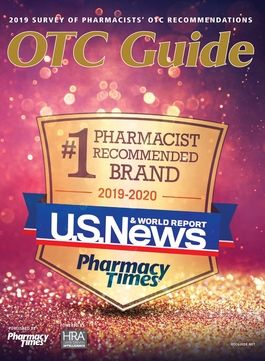Publication
Article
OTC Guide
Americans Love OTC Medications
Key Takeaways
- OTC medications are widely used, affordable, and accessible, often costing significantly less than prescription alternatives.
- Health plans, including Medicare Advantage, are increasingly covering OTC products, enhancing enrollee satisfaction and reducing costs.
Shouldn’t we rethink pharmacy benefits and the role of the pharmacist when it comes to these products?
Nearly 9 out of every 10 americans use OTC medications regularly—that is more than 260 million users strong.1
With Americans making about 3 billion trips annually for their purchase, OTC medications are a staple of consumer goods and products.2 And why wouldn’t they be? These products are readily accessible not only in pharmacies but also in gas stations, hotel pantries, and vending machines. OTC medications are substantially more affordable than prescription alternatives, often costing a 10th or less of an alternative prescription-only product and without requiring a visit to the clinic. OTC medications treat hundreds, if not thousands, of common and not-so-common ailments, and the space is growing, with new products and additional Rx-to-OTC switches occurring every year.
HEALTH PLANS GETTING INTO THE GAME
Health plans are leaning into the OTC space more and more, as some Medicare Advantage Plans now offer enrollees a card to use for OTC medication purchases. Smart thinking. This provides the double benefit of using an OTC medication as a potential substitute for a prescription medication or unneeded care and creating a happy enrollee who wants to sign up year after year. Other plans have begun to increasingly cover OTC products as more become available in terms of the number and variety of conditions treated. Again, for both drug cost savings and medical reasons but also for plan satisfaction, it just makes sense.
MAXIMIZING THE USE OF FSAS AND HSAS
Now that high-deductible health plans with flexible spending accounts (FSAs), health reimbursement arrangements (HRAs), and health savings accounts (HSAs) are nearly ubiquitous among offerings to employees, care team members, and employers, patients should consider maximizing their use. Using an FSA, HRA, or HSA to cover OTC products also just makes sense, and we should be making it easy for consumers to do so.
LET’S USE PHARMACISTS TO PRESCRIBE MEDICATIONS FOR FSAS, HRAS, HSAS, AND INSURANCE COVERAGE
Pharmacists orally prescribe OTCs all day, every day. Why can’t they put it on a piece of paper so that patients can document as much with their FSA or HSA? It seems kind of silly that a pharmacist can assess for allergies and orally prescribe antihistamines or other products that a patient needs, but it has to be in writing for tax documentation reasons. We should be able to prescribe OTCs on paper, and consumers should be able to use that as documentation for their FSA, HRA, or HSA. Who is with me? We hope you enjoy our 2019 OTC Guide®.
For pharmacist OTC recommendations, visit The OTC Guide website.
Troy Trygstad, PharmD, PhD, MBA, is vice president of pharmacy programs for Community Care of North Carolina, which works collaboratively with more than 1800 medical practices to serve more than 1.6 million Medicaid, Medicare, commercially insured, and uninsured patients. He received his PharmD and MBA degrees from Drake University in Des Moines, Iowa, and a PhD in pharmaceutical outcomes and policy from the University of North Carolina at Chapel Hill. He also serves on the board of directors for the American Pharmacists Association Foundation and the Pharmacy Quality Alliance.
REFERENCES
- Over-the-counter medicines create a healthier healthcare system. Consumer Healthcare Products Association website. yourhealthathand.org/images/uploads/The_Value_of_OTC_Medicine_to_the_United_States_BoozCo.pdf. Accessed May 29, 2019.
- Statistics on OTC use. Consumer Healthcare Products Association website. chpa.org/MarketStats.aspx. Accessed May 29, 2019.







